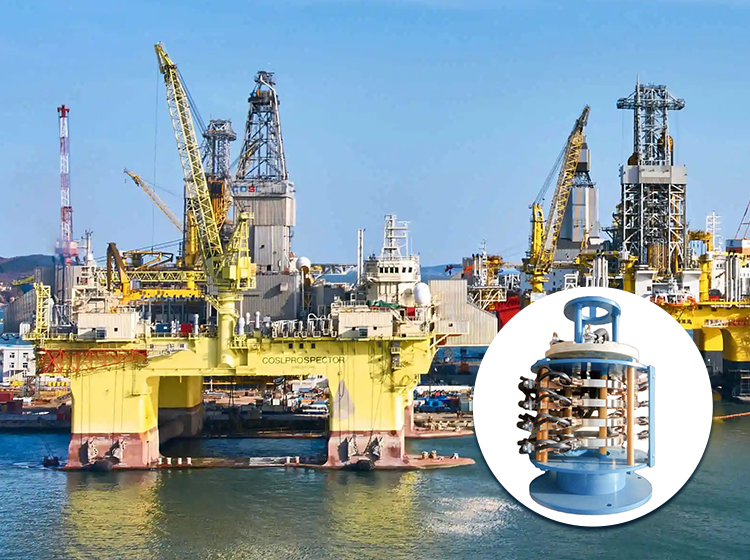In this article, we unfold the intricate relationship between slip rings and offshore machinery—how it steers the daily operations, the types of slip rings used, concerns users might have, along with the proposed measures to tackle those concerns, the governing standards, and future predictions for the sector.
Introduction to Slip Ring Application in Offshore Machinery
Offshore machinery is an all-encompassing term that denotes an extensive array of equipment designed to be used in the challenging maritime environment, far from the mainland’s stability. More often than not, these are massive structures performing vital tasks, including drilling, excavation, and even green energy generation. As we set sail into the in-depth mechanics and marvels of these machines, it’s essential to grasp the importance of a component that primarily holds the thread – the slip ring.
While a slip ring may not hold much physical grandeur in comparison to the colossal machinery in which it operates, its operational impact is undoubtedly colossal. Simplistically put, a slip ring is an electromechanical device that allows the transmission of power and electrical signals from a stationary structure to a rotating one. This mechanism is crucial in the operation of equipment that has rotating parts, like wind turbines, excavation drills, and cranes; which form the backbone of offshore operations.
The effectiveness and efficiency of the operations in these unforgiving offshore environments heavily depend on the seamless functioning of the slip rings. Any interruptions or malfunctions in the slip ring assembly can cause setbacks in operations, sometimes leading to critical downtime and subsequent financial impacts.
In the maritime environment, offshore machinery is frequently exposed to harsh conditions – salt water, humid air, and potentially corrosive materials. The slip rings designed for this landscape must exhibit not only mechanical precision but also robustness to withstand these factors.
In essence, slip ring is a silent yet instrumental protagonist in the story of offshore machinery, ensuring critical aspects of mechanical and electrical operations. Our understanding of offshore machinery remains incomplete without acknowledging and appreciating the role of slip rings. As we delve into the intricacies of this article, we’ll journey through their diverse roles, evolving design techniques, managing user concerns, the effect of regulatory standards, and the exciting future they hold in the offshore industry. So, let’s embark upon this enlightening exploration of the silent, yet pivotal role of slip rings in offshore machinery.
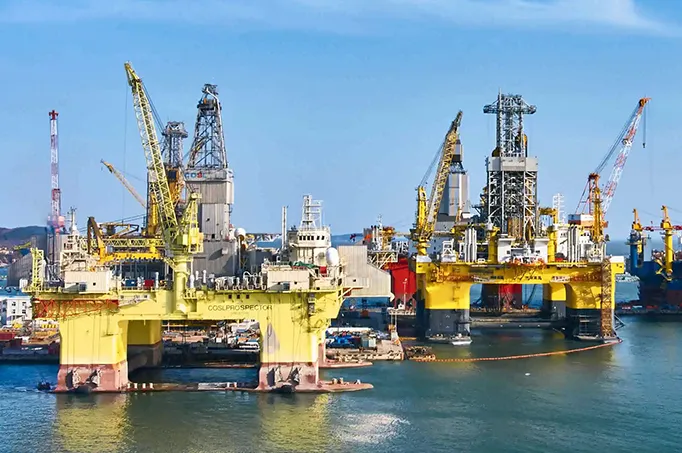
The Role of Slip Rings in Offshore Machinery
Imagine the vast and burgeoning infrastructure that forms our offshore landscape – the towering wind turbines, the hardy drilling rigs extending into the ocean’s depths, and cranes stretching their long arms towards the sky. Each of these modern colossuses embodies the pinnacle of engineering prowess, and within their complex systems lies the slip ring, a seemingly modest yet pivotal component that harmonizes the static with the dynamic.

In offshore drilling rigs, where the extraction of natural resources is executed, slip rings ensure that the rotary table, the beating heart of the rig, maintains its lifeblood of power while rotating to bore into the seabed. They facilitate the constant feedback loop of data from drilling sensors back to the control room, which is vital for precision drilling and avoiding catastrophic drilling blowouts. This data transfer capability is made possible by slip rings that can handle high-speed data in conjunction with power transmission, in an environment where reliability is expected and demanded for uninterrupted operations around the clock.
When you crane your neck to observe the graceful movement of offshore crane booms, it is the slip ring systems in the boom’s base that allow for such seamless maneuvering. As these cranes lift heavy loads for construction and maintenance work, the slip rings act as their rotational axis, handling fluctuating loads both electrically and mechanically. They manage not just the high-current power needed for lifting but also the crucial signals that coordinate the crane’s operation, ensuring precise and safe placement of materials.
Turning towards the wind turbines, those icons of renewable energy, slip rings play their part in the transformation of blustery sea winds into usable energy. As the wind fluctuates and turbines pivot to capture it efficiently, the slip rings offer a continuous electrical connection between the turbine’s nacelle and the blade pitch control mechanism. This connection adjusts blade angles for optimal wind capture and transfers the generated power back to the shore. The critical data concerning wind speed and turbine efficiency also flow seamlessly through these slip rings, which permits real-time adjustments and monitoring, essential for sustainable and efficient energy production.
In each unique application onboard offshore platforms, slip rings are called to perform under extreme pressure and environment. Their roles span from being the silent carriers of electricity to the dutiful couriers of data, from fortifying the structure against potential breakdowns to enabling the real-time adjustments that optimize performance. As varied as their roles may be, the common thread that ties them together is the perpetual goal of reliability and efficiency in the relentless and rugged offshore environment. Hence, it is clear that although modest in size, slip rings are monumental in function, enabling the offshore industry to thrive and propel towards an innovative future.
Types of Slip Rings in Offshore Machinery
In the vast ocean of offshore machinery, slip rings manifest in diverse forms –configurations specifically tailored to the needs of different applications and environments. Driven by innovation and the aspiration for higher efficiency, engineers have developed various types of slip rings. These types range from simple electrical designs to intricate combinations of electrical, fiber optic, and hydraulic elements. In this segment, we will dive into the world of slip rings, exploring how factors like functionality, reliability, and longevity have shaped their evolution.
Electrical Slip Rings
At the core of slip rings are the electrical connections that facilitate power and signal transfer. Electrical slip rings consist of rotating and stationary parts, typically the rotor and stator. As these parts maintain contact while the assembly rotates, electrical currents and signals can flow seamlessly from one section to another.
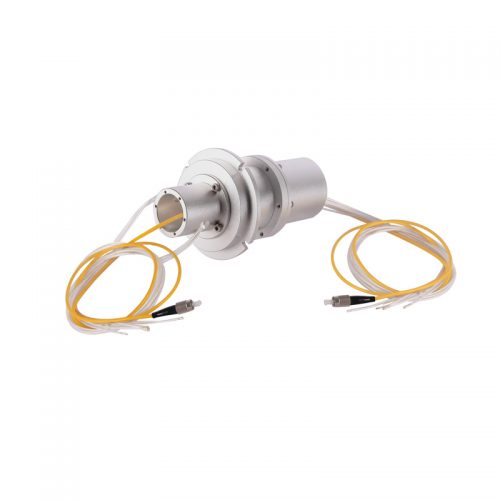
Notable features of electrical slip rings include the use of noble metals like gold or silver for better electrical performance and minimized wear. Generally, brush-and-ring assemblies permit smooth power and signal transfer. While they demand periodic maintenance, their reliability and efficiency make them indispensable for a multitude of offshore applications, including cranes and drilling rigs.
Fiber Optic Rotary Joints (FORJs)
In scenarios where ultra-high-speed data transfer is a prime requirement, fiber optic rotary joints (FORJs) step in. These slip rings incorporate optic fibers alongside standard electrical connections to enable high-speed communication between rotating and stationary components without any degradation of signal integrity.
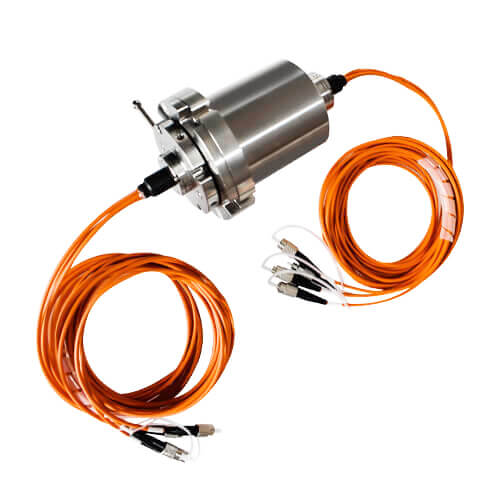
FORJs work on the principle of collimating the light from an input optical fiber and refocusing it on the output fiber. The use of lenses or prisms allows this process to occur even as the assembly rotates, offering high data rates with minimal loss. The adoption of FORJs has grown in offshore wind turbines and advanced telecommunication systems that demand the simultaneous transmission of vast amounts of data and power.
Hydraulic and Pneumatic Slip Rings
For applications where fluids or gases need to be transferred from stationary to rotating components, the hydraulic or pneumatic slip rings come into play. These slip rings consist of sealed rotating unions that facilitate the flow of hydraulic oil or compressed air. In many instances, they are integrated with electrical slip rings to create an all-in-one solution for power, signal, and fluid transmission.
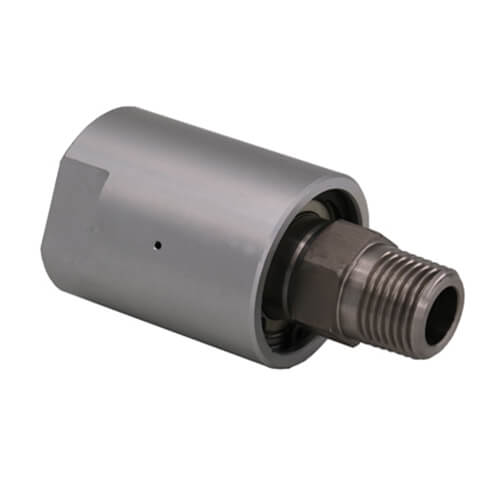
Their application extends to machinery that relies on hydraulic systems for torque or force generation, such as subsea drilling equipment or equipment with remotely operated vehicles (ROVs).
In the deep waters of offshore machinery, these various types of slip rings coexist, each offering unique features and specifications that cater to a host of applications. By understanding the idiosyncrasies of each slip ring and its role, we can gain a more comprehensive understanding of the integral nature of their operation in the offshore domain. Together, electrical slip rings, fiber optic rotary joints, and hydraulic slip rings create a balanced ecosystem that equips offshore machinery with essential functionality and efficiency to conquer the high seas.
Key User Concerns in Slip Ring Application for Offshore Machinery
Navigating through the demanding seas of offshore operations entails corresponding challenges that the machinery operators have to routinely tackle. Among these, the application and performance of slip rings attract specific concerns, given their integral role in empowering these offshore behemoths. The concerns often revolve around reliability, maintenance, efficiency, and resistance to harsh marine conditions. Let’s delve deeper into these key considerations.
Reliability
Offshore machinery’s ability to perform optimally in harsh marine conditions is critically dependent on the durability and dependability of the slip rings. Given their pivotal role in transmitting power and data, reliability is paramount. The often intense and relentless maritime conditions, including high winds, extreme temperatures, and corrosive seawater, place a significant demand on these slip rings. After all, a failure here could result in costly system shutdowns or, even worse, potentially hazardous situations.
Maintenance
The aspects of longevity, ease of repair, and replacement bear significant weight in the offshore context due to these operations’ remote and often inaccessible locations. Considering the challenging environment and the relative difficulty of conducting on-site maintenance, the slip rings employed must be designed to require minimal maintenance while providing extended lifetimes. In this regard, issues like brush wear in electrical slip rings or fluid leakage in hydraulic ones need to be mitigated through design innovation and material selection.
Efficiency
Another key concern is the slip ring’s capacity to transmit power and signals with minimal loss, even under challenging environments. Efficiency enhancements not only render operations more economically viable, but they also allow for more effective and precise control of machinery. This aspect defines the need for solutions such as the Fiber Optic Rotary Joints (FORJs), which can transmit large amounts of data at high speed with minimal signal degradation.
Resilience to Salt and Moisture
Given the omnipresent salt spray and moisture in offshore environments, operators often express concerns about the impact of these harsh elements on slip ring performance. Both salt and moisture can lead to corrosion and degradation of materials, leading to potential loss of connection or reduced operational life of the slip ring. Thus, the material choice and protective measures like sealing or housing to prevent the ingress of moisture and salt become critical.
Every machinery operator working in the maritime environment harbors a keen understanding of these concerns. The goal is to ensure that these crucial components deliver on expectations, regardless of the taxing environment they operate in. Essentially, they need their slip rings to be as resilient and steadfast as the crew that operates this heavy machinery.
By gauging these concerns and continually innovating, manufacturers can forge better, more reliable, and more efficient slip rings that stand the test of time and tide. It is then that the ebb and flow of offshore operations can choreograph seamlessly, powered by slip rings as they continue to form the invisible but sturdy backbone of offshore machinery.
Slip Ring Application in Offshore Machinery: Strategies and Innovations
In the wake of growing user concerns and the ever-evolving demands of offshore machinery, engineers and manufacturers have responded by developing innovative strategies and designs to enhance slip rings’ longevity, efficiency, and reliability. These advancements revolve around the use of advanced materials, improved design methodologies, and novel manufacturing techniques that transform slip ring applications in offshore machinery.
Advanced Materials
One of the primary innovations in slip rings is the adoption of advanced materials to improve performance and durability in harsh offshore conditions. Manufacturers have turned to precious noble metals like gold and silver for contact brushes and rings, which offer better electrical conductivity, lower contact resistance, and minimized wear. Corrosion-resistant alloys and specialized coatings reduce the impact of salt spray and moisture on slip ring components, thereby extending the operational life.
Improved Design Strategies
Another area of innovation is the enhancement of design strategies. Through meticulous research and engineering, slip ring designs have been optimized to decrease maintenance requirements, increase efficiency, and accommodate various applications. For instance, brushless slip rings have emerged as a maintenance-free alternative to traditional brush designs by using contactless, electromagnetic coupling to transfer power and data. Modular designs enable easy component replacement, simplifying maintenance and reducing downtime. Additionally, integrated slip rings, which combine electrical, fiber optic, and hydraulic elements, have been developed to address multi-faceted offshore machinery applications.
Sealing and Encapsulation
When it comes to safeguarding slip rings from the harsh marine environment, effective sealing techniques and encapsulation have been at the forefront of engineering innovations. These strategies help protect the slip rings from the ingress of moisture, salt, and other contaminants. For instance, the development of hermetically sealed rotary joints and IP-rated (Ingress Protection) enclosures provide varying levels of protection against dust, water, and corrosive elements, ensuring a better lifespan and performance.
Electronic Signal Enhancement
To make certain that slip rings achieve their desired efficiency in data and power transmission, engineers have developed electronic signal enhancement techniques. By incorporating components like amplifiers, frequency converters, and switches, these enhancements reduce signal loss and data degradation due to rotation or noise. This innovation has found particular relevance in fiber optic rotary joints, where maintaining the integrity of high-speed data streams is essential.
Novel Manufacturing Techniques
Manufacturers have also adopted new manufacturing techniques to enhance the precision and quality of slip rings. Processes such as additive manufacturing, automated assembly, and computer-aided manufacturing (CAM) support the production of custom, application-specific solutions. These techniques allow manufacturers to develop highly reliable and robust slip rings tailored to the unique needs of various offshore machinery.
In conclusion, the ongoing innovations and strategies in slip ring applications undoubtedly showcase the commitment of the industry to address user concerns and keep pace with the evolving environment of offshore machinery. These advancements across materials, design strategies, and manufacturing techniques reflect a promising future in which slip rings can meet and potentially surpass the expectations of offshore operators, turning the wheel of technological progress with each rotation.
Regulatory Standards for Offshore Slip Rings
The safe and efficient operation of slip rings in offshore machinery is underpinned by a series of industry standards and certifications that govern their manufacture, installation, and maintenance. As an integral part of these massive machines, slip rings are required to meet a variety of conditions to ensure minimal downtime, optimal performance, and above all, safety. Regulatory bodies such as the International Organization for Standardization (ISO), International Electrotechnical Commission (IEC), and others have set forth these standards, delivering a robust framework of compliance and quality control.
International Organization for Standardization (ISO)
ISO standards, such as ISO 9001 for Quality Management Systems, play a role in ensuring the consistent production of high-quality slip rings. Adherence to these standards means that the company has fulfilled rigorous criteria concerning its management practices, production processes, and commitment to continuous improvement. Resultantly, manufacturers who hold ISO 9001 certifications give their customers confidence in their capability to consistently deliver reliable products.
International Electrotechnical Commission (IEC)
The IEC, on the other hand, offers more technology-specific standards like IEC 60068 or IEC 60529. The IEC 60068 standard encompasses a range of tests, such as salt mist or severe weather conditions, ensuring the slip rings’ robustness for use in harsh offshore environments. IEC 60529 outlines the degrees of protection provided by enclosures, known as the IP Code, which lays down the effectiveness of a slip ring’s sealing against the ingress of water, dust, and other foreign bodies.
Other Industry-Specific Standards
Additionally, there are industry-specific standards like DNV GL rules for maritime applications or the ABS guide for offshore drilling rigs. These define the safety, design, and testing requirements pertinent to the particular offshore applications, ensuring that the slip rings perform reliably and safely under the unique operating scenarios they are exposed.
ATEX and IECEx Certifications
In potentially explosive environments common in offshore operations, slip rings need to meet the ATEX directives for equipment within explosive atmospheres or the IECEx scheme for explosive environments. These certifications guarantee that the slip rings have been designed and manufactured to minimize the risk of ignition and are safe to use in places where an explosive atmosphere might occur.
Overall, these regulatory standards and certifications act as a beacon guiding the design and production stages of slip rings for offshore machinery. They not only contribute to enhanced safety and reliability but also build user trust in these components. By adhering to these mandates, manufacturers can ensure that their slip rings can withstand the taxing marine environments while delivering the expected performance, making waves in the vast sea of offshore machinery.
Future of Slip Rings in Offshore Machinery
As the offshore industry continues to evolve alongside the relentless march of technology, so does the role of slip rings within this expansive machinery. The potential future developments in slip ring technology straddle multiple promising directions – from advanced materials promising enhanced conductivity and resilience, to the burgeoning fields of contactless technology and digital integration.
Advanced Materials
The future of slip ring technology may very well be scripted by advanced materials. In a continued pursuit of durability and superior conductivity, engineers are exploring newer materials like graphene and advanced composites. Graphene, owing to its exceptional conductivity and tensile strength, is a potential game-changer. Likewise, new composites with enhanced mechanical strength and reduced corrosion offer performance enhancements under the rigors of the offshore industry’s demanding environments.
Contactless Technology
Contactless slip ring technology stands as another promising frontier. Utilizing electromagnetic induction to transmit data and power, contactless slip rings can eliminate the mechanical wear issues inherently associated with brush-based designs. This promising intervention could reduce maintenance needs and extend operational lifespan, leading to an overall more reliable system. This technology could also open new dimensions in high-speed data transmission and higher current capacities.
Digital Integration Capabilities
In the digital era, the evolution of slip rings is inevitably impacted by increasing digital integration. In the future, slip rings will likely be further developed to support a much heavier data transmission load, incorporating advancements in communications technology such as 5G. In parallel, the growth of Industry 4.0 might lead to ‘smart’ slip rings equipped with sensors and IoT connectivity, providing real-time condition monitoring and predictive maintenance capabilities. Such advancements would increase operational efficiency and minimize unplanned downtime.
Customization and Modularity
Driven by diversified needs, customizability, and modularity may become the norm in slip ring manufacturing. These offerings would provide improved flexibility and easy adaptability to a wide range of applications, while also reducing spare part requirements and simplifying maintenance.
Sustainable Manufacturing Practices
In the climate-aware world, sustainable manufacturing practices will also find resonance in slip ring production. Energy-efficient manufacturing processes, recyclable materials, and activities aligning with the circular economy will all contribute to reducing the environmental footprint of these essential components.
In summary, the future of slip rings in offshore machinery paints a picture of progress driven by advanced materials, disruptive technologies, digital integration, and sustainable practices. As the technology perseveres in its quest for reliability and efficiency, the transformation it undergoes will reflect the changing tide presented by the relentless challenges and evolving demands of the offshore industry.
Conclusion
In conclusion, slip rings are integral to offshore equipment operation, but pose certain challenges. However, with evolving technological advancements, solutions are catering to these concerns, making slip rings a crucial asset in the sector.
FAQs about Slip Ring Application in Offshore Machinery
This section aims to answer frequently asked questions about slip ring applications in offshore machinery. It serves to provide a quick reference guide for readers and clarifies common misconceptions regarding this fundamental, yet complex, piece of offshore machinery technology.
Q: What is the role of slip rings in offshore machinery?
A: Slip rings in offshore machinery are designed to enable the transmission of electrical currents, signals, and data from a stationary part of a machine to its rotating parts. They are integral to many types of machinery, including wind turbines, cranes, and remotely operated underwater vehicles, supporting uninterrupted operation.
Q: What materials are commonly used in offshore slip rings?
A: Depending on the specific application and environmental conditions, a varied range of materials can be used in the manufacturing of slip rings. The contact materials include a range of metals such as copper alloys, silver, or gold due to their excellent electrical conductivity. Enclosures often consist of corrosion-resistant alloys to protect against harsh offshore conditions.
Q: What are the advantages of a brushless slip ring?
A: Brushless slip rings, or “contactless” slip rings, are a newer design trend. They utilize electromagnetic induction to transmit power and data, reducing mechanical wear and increasing the operational lifespan. By eliminating physical contact, these slip rings provide high data transmission speeds and reduced maintenance needs.
Q: How does a slip ring contribute to the overall efficiency of offshore machinery?
A: Slip rings contribute significantly to the overall efficiency of offshore machinery by ensuring uninterrupted power transmission and facilitating smooth, reliable operations. Contactless designs and the implementation of advanced materials further enhance efficiency by reducing maintenance needs, increasing operational lifespan, and ensuring reliable data transmission.
Q: What future advancements can we expect in slip ring technology for offshore applications?
A: Future advancements in slip ring technology for offshore applications are likely to be driven by several factors, including the use of advanced materials, the implementation of contactless technology, better digital integration, and sustainable manufacturing practices. These developments are expected to enhance the reliability, efficiency, and durability of slip rings in the offshore equipment they support.
Q: Why are industry standards and certifications important for slip ring manufacturers?
A: Industry standards and certifications ensure that the slip rings meet specific safety and performance requirements, thereby enhancing reliability and user trust. They are crucial in ensuring that the slip rings are designed and manufactured to perform effectively and safely under various operational conditions and environmental challenges in offshore settings.
See What We Can Do

